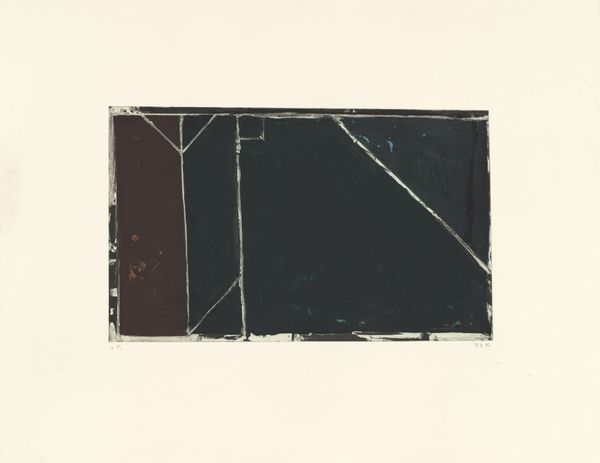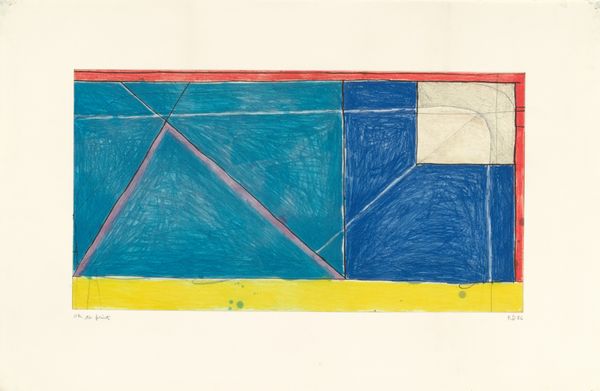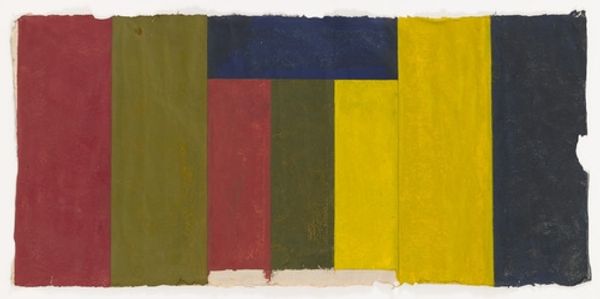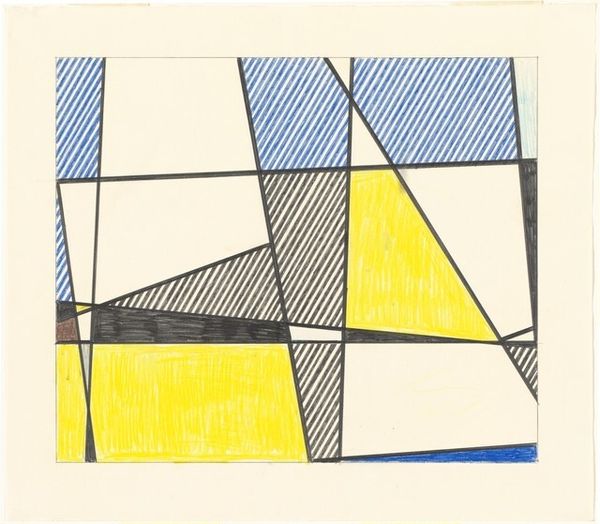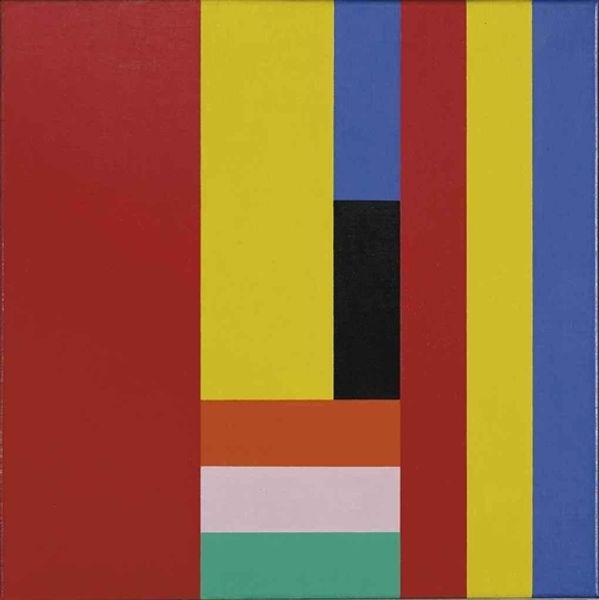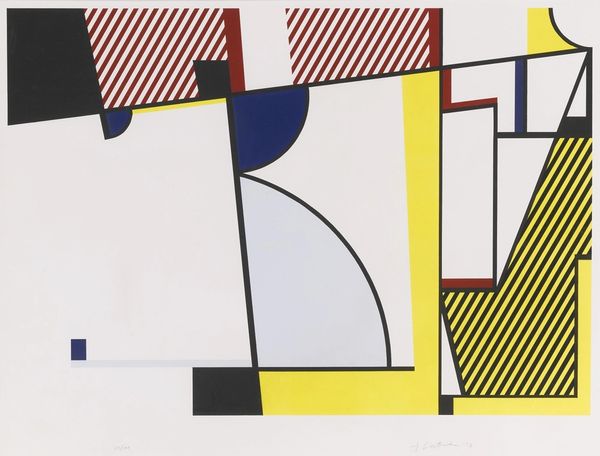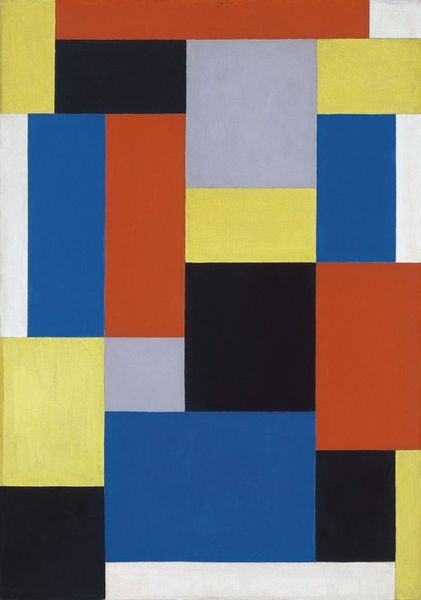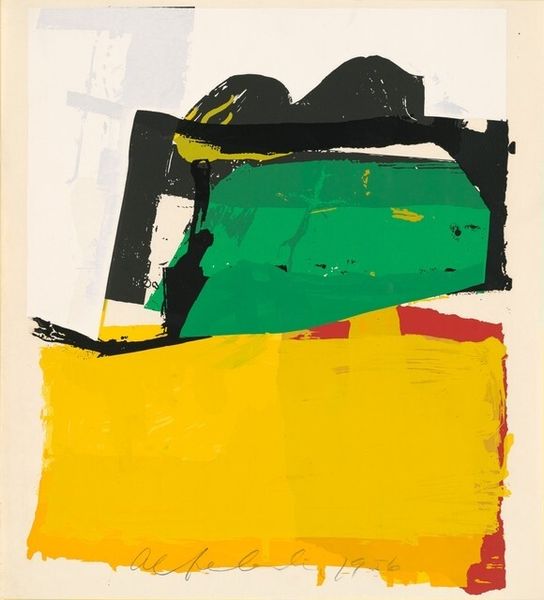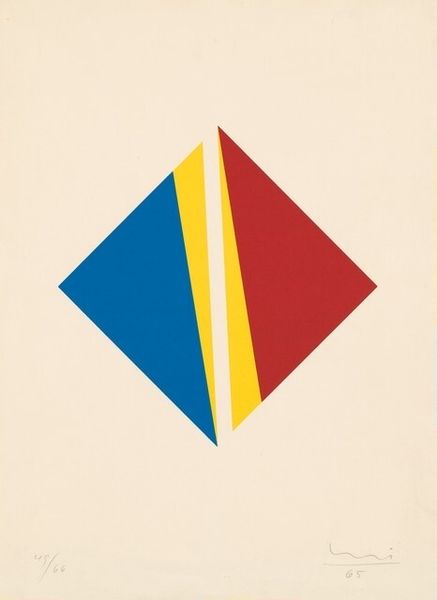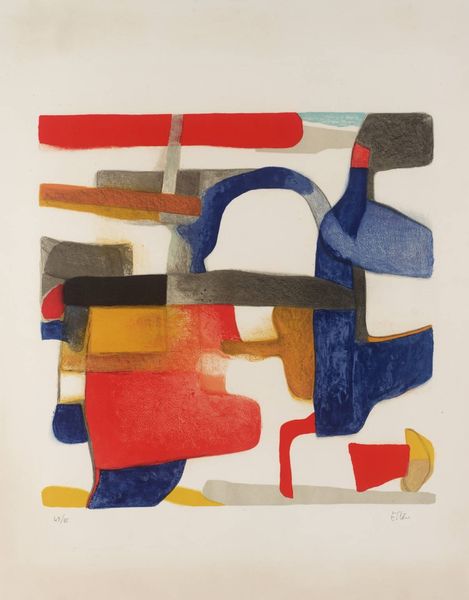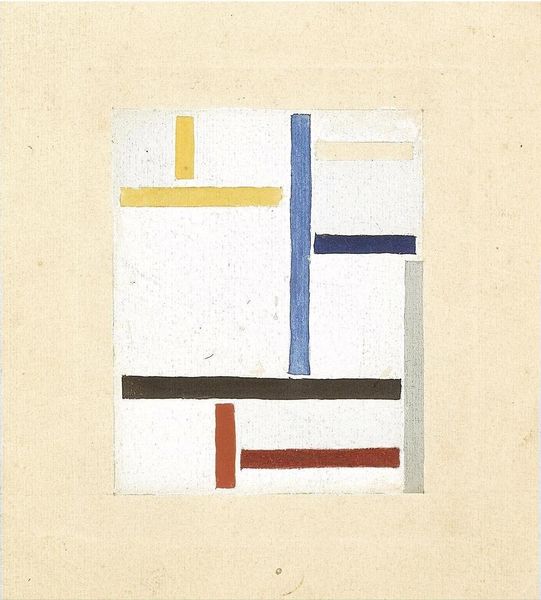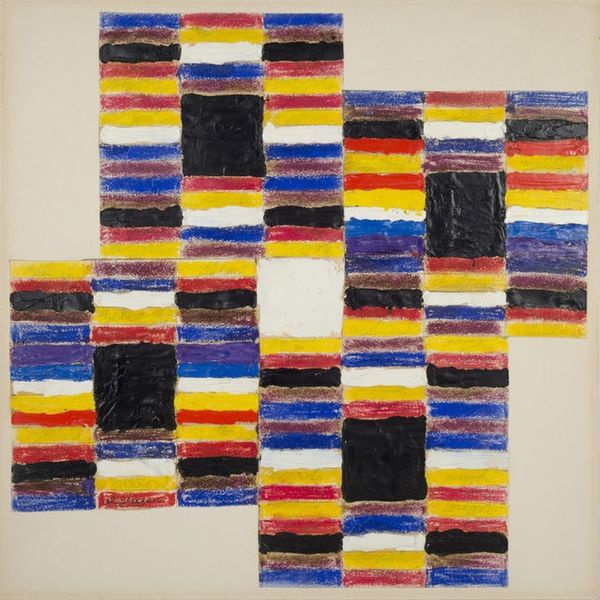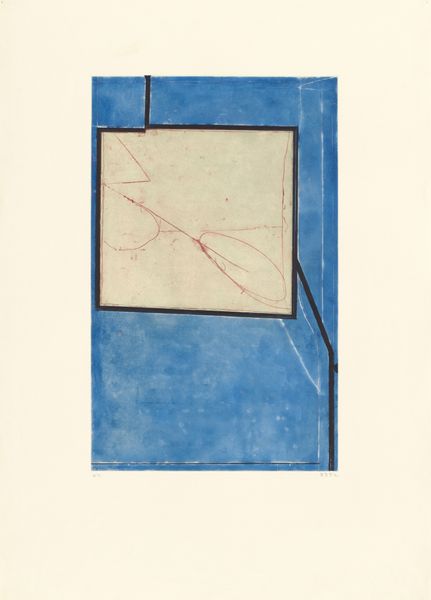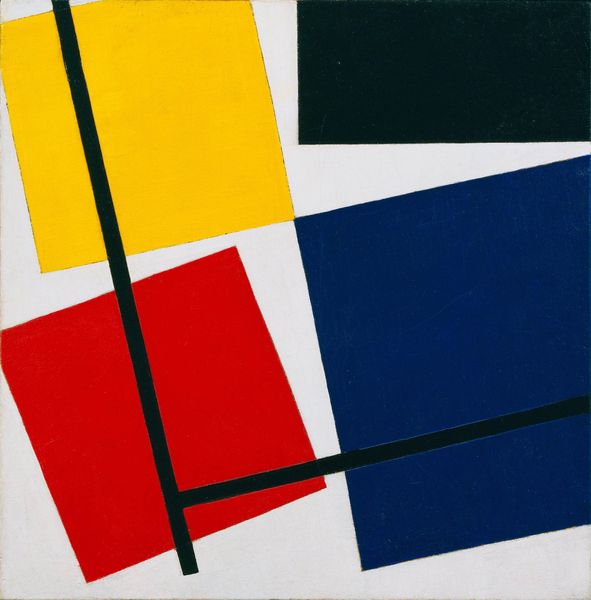
# print
#
bay-area-figurative-movement
#
geometric
#
abstraction
Dimensions: image: 30.5 x 66 cm (12 x 26 in.) sheet: 67.3 x 102.2 cm (26 1/2 x 40 1/4 in.)
Copyright: National Gallery of Art: CC0 1.0
Curator: At first glance, I find Diebenkorn’s "Folsom Street Variations III (Primaries)" somewhat reserved, even a little melancholic. There is a stillness here despite the bold color choices. Editor: That's a fascinating observation! This print, from 1986, seems to be playing with a restricted color palette that could reference both the bold minimalism of Mondrian, but also speak to the cultural impact and design influences of Bauhaus that embraced simplified forms during that period. Do you think the choice of primaries contributes to its austere feel? Curator: Undoubtedly. Primary colors in this simplified form, along with those underlying geometrical constructs in grey, create a composition with what appears to me as fractured space. You see it particularly in relation to his earlier Bay Area figurative work and what this signifies in terms of a departure. Editor: Agreed. Speaking formally, observe how Diebenkorn used overlapping planes to fracture the composition. There’s also a push and pull between surface and depth that leads to interesting tensions and unexpected nuances given his selection of the square and triangle here. Curator: And within the context of 1980s art—specifically post-modernism—this feels like an exploration of flatness that directly refutes established principles of classical composition, and this subversion plays to cultural shifts valuing simplicity during the Reagan era. Editor: Yes! Plus, I also appreciate the imperfections. The texture, though a print, seems to possess gestural brushstrokes, as if longing for paint. Those imperfections keep it raw. They humanize the geometry, preventing it from becoming overly sterile or cold. Curator: Well, it has made me reconsider my initial assessment of it, actually. The dialogue between careful planning and deliberate roughness suggests a subtle but clever challenge to formal ideals, something resonant within society's own evolving definitions during the eighties. Editor: Absolutely. By confining himself to these limited elements, the artist exposes more than he hides, encouraging viewers to linger and seek depth beyond this surface.
Comments
No comments
Be the first to comment and join the conversation on the ultimate creative platform.
